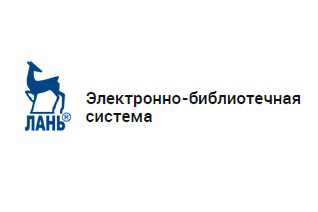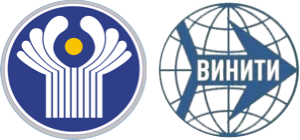| УДК 622.272 | DOI: 10.21440/0536-1028-2021-8-5-14 |
Relevance. At present, during the transition from open pit to underground mining at iron ore deposits, the most widespread technology is the sublevel caving with frontal ore drawing. This technology has significant drawbacks, namely low ore extraction indicators and increased operating costs for preparatory work and stoping. The development of an alternative technology for the upper sublevel mining, which ensures high extraction indicators, active ore drawing, and lower prime cost of the main flow processes in the presence of an internal dump used as a rock cushion on the quarry floor, is an urgent scientific and technical task.
Research objective is to study the mining factors effect on the technical and economic indicators of differing technologies for mining the upper sublevel under the rock cushion at the iron ore deposits.
Research methods. The work uses a comprehensive research method, including the search and design of a rational version of technology, economic and mathematical modeling, and technical and economic comparison. Analysis of the results. The dependences of the main technical and economic indicators (losses and dilution, the specific volume of preparatory development works, labor productivity and specific operating costs for flow processes) on the height of the upper sublevel between 40 and 100 m and mine capacity between 0.8 and 2.4 million tonnes of ore per year. It has been determined that the operating costs for ore mining have a minimum value under a height of the upper sublevel of 80 m and a production capacity of 1.6 million tonnes of ore per year, which is optimal for an enterprise during the transition period.
Conclusions. The technology of sublevel open stoping with the subsequent rib pillar development by a system of induced block caving has been substantiated, which far more efficient as compared to the traditional version of sublevel caving.
Keywords: iron ore deposit; transition zone; rock cushion; mining system; mining factors; extraction indicators; technical and economic indicators.
Acknowledgements. The research has been carried out within the framework of the state contract no. 075-00581-19-00, theme no. 0405-2019-0005.
REFERENCES
- Sokolov I. V., Smirnov A. A., Antipin Iu. G., Nikitin I. V. Scientific aspects of choosing the geotechnical strategy for mining of transition areas while combined mining of ore deposits. Problemy nedropolzovaniia = The Problems of Subsoil Use. 2020; 1(24): 11–17. Available from: doi: 10.25635/2313- 1586.2020.01.011 (In Russ.)
- Kaplunov D. R., Leizerovich S. G., Tomaev V. K., Sidorchuk V. V. About further development of mining works in Kursk Magnetic Anomaly basin. Gornyi zhurnal = Mining Journal. 2011; 10: 44–49. (In Russ.)
- Kalmykov V. N., Gavrishev S. E., Burmistrov K. V., Gogotin A. A., Petrova O. V., Tomilina N. G. New underground mining approaches justification for the Maliy Kuybas open pit mining operations. Gornyi informatsionno-analiticheskii biulleten (nauchno-tekhnicheskii zhurnal) = Mining Informational and Analytical Bulletin (scientific and technical journal). 2013; 4: 132–139. (In Russ.)
- Golik V. I., Polukhin O. N. Use of the mineral resources of kma toward ecologization of society. Problemy regionalnoi ekologii = Regional Environmental Issues. 2013; 4: 45–49. (In Russ.)
- Sakantsev G. G. Internal piling at deep ore pits. Ekaterinburg: UB RAS Publishing; 2008. (In Russ.)
- Sokolov I. V., Smirnov A. A., Antipin Iu. G., Nikitin I. V., Tishkov M. V. Substantiation of protective cushion thickness in mining under open pit bottom with the caving methods at Udachnaya pipe. Fizikotekhnicheskie problemy razrabotki poleznykh iskopaemykh = Journal of Mining Science. 2018; 2: 52–62. Available from: doi 10.15372/FTPRPI20180207 (In Russ.)
- Lobanov E. A., Eremenko A. A. Development of podcarrier ore resources of Oleniy ruchey deposit. Vestnik Kuzbasskogo gosudarstvennogo tekhnicheskogo universiteta = Bulletin of the Kuzbass State Technical University. 2021; 4(146): 86–95. Available from: doi: 10.26730/1999-4125-2021-4-86-95 (In Russ.)
- Neverov S. A., Konurin A. I., Shaposhnik Iu. N. Safety in substoping-and-caving in tectonically stressed rock masses. Interekspo Geo-Sibir = Interexpo GEO-Siberia. 2021; 2(3): 311–321. Available from: doi: 10.33764/2618-981X-2021-2-3-311-321 (In Russ.)
- Shamiev Zh. B., Alibaev A. P. The technology of pit reserves combined mining by the sublevel caving system with slicing and frontal ore drawing through the slot. Sovremennye problemy mekhaniki sploshnykh sred = Current Issues of Continuum Mechanics. 2010; 12: 62–70. (In Russ.)
- Sokolov I. V., Smirnov A. A., Antipin Iu. G., Nikitin I. V., Baranovskii K. V. Underground geotechnology for thick iron-ore deposit combined mining. Izvestiya vysshikh uchebnykh zavedenii. Gornyi zhurnal = News of the Higher Institutions. Mining Journal. 2014; 7: 25–32. (In Russ.)
- Mazhitov A. M. Assessment of the extent of man-induced transformation of a subsoil block in upward mining using ore and host rock caving. Gornaia promyshlennost = Mining Industry. 2021; 4: 113–118. Availabel from: doi: 10.30686/1609-9192-2021-4-113-118 (In Russ.)
- Lovitt M. Evolution of sublevel caving – safety improvement through technology. The AusIMM Bulletin. 2016; April: 82–85.
- Quinteiro C. Design of a new layout for sublevel caving at depth. In: Proceedings of the Fourth International Symposium on Block and Sublevel Caving, Australian Centre for Geomechanics, Perth. 2018. P. 433–442. Available from: doi.org/10.36487/ACG_rep/1815_33_Quinteiro
- Mijalkovski S., Despodov Z., Mirakovski D., Adjiski V. Methodology for optimization of coefficient for ore recovery in sublevel caving mining method. Podzemni Radovi. 2017; 30: 19–27. Available from: doi.org/10.5937/podrad1730019S
- Savich I. N., Mustafin V. I. Perspectives of use and rationale design solutions of block (level) and sublevel face draw. Gornyi informatsionno-analiticheskii biulleten (nauchno-tekhnicheskii zhurnal) = Mining Informational and Analytical Bulletin (scientific and technical journal). 2015; S1: 419–429. (In Russ.)
- Pourrahimian Y., Askari Nasab H., Tannant D. A multi-step approach for block-cave production scheduling optimization. International Journal of Mining Science and Technology. 2013; 23: 739–750. Available from: doi: 10.1016/j.ijmst.2013.08.019
- Afum B. O., Ben-Awuah E. A review of models and algorithms for surface-underground mining options and transitions optimization: some lessons learnt and the way forward. Mining. 2021; 1: 112–134. Available from: doi.org/10.3390/mining1010008
- MacNeil J. A. L., Dimitrakopoulos R. G. A stochastic optimization formulation for the transition from open pit to underground mining. Optimization and Engineering. 2017; 18: 793–813. Available from: doi: 10.1007/s11081-017-9361-6
- Whittle D., Brazil M., Grossman P., Rubinstein H., Thomas D. Combined optimisation of an openpit mine outline and the transition depth to underground mining. European Journal of Operational Research. 2018; 268(2): 624–634. Available from: doi: 10.1016/j.ejor.2018.02.005
- King B., Goycoolea M., Newman A. Optimizing the open pit-to-underground mining transition. European Journal of Operational Research. 2017; 257(1): 297–309.
- Dagdelen K., Traore I. Open pit transition depth determination through global analysis of open pit and underground mine production scheduling. Advances in Applied Strategic Mine Planning. 2018. P. 287–296. Available from: doi: 10.1007/978-3-319-69320-0_19
- Soltani A., Osanloo M. Semi-symmetrical production scheduling of an orebody for optimizing the depth of transitioning from open pit to block caving. Resources Policy. 2020; 68. Available from: doi: 10.1016/j.resourpol.2020.101700









